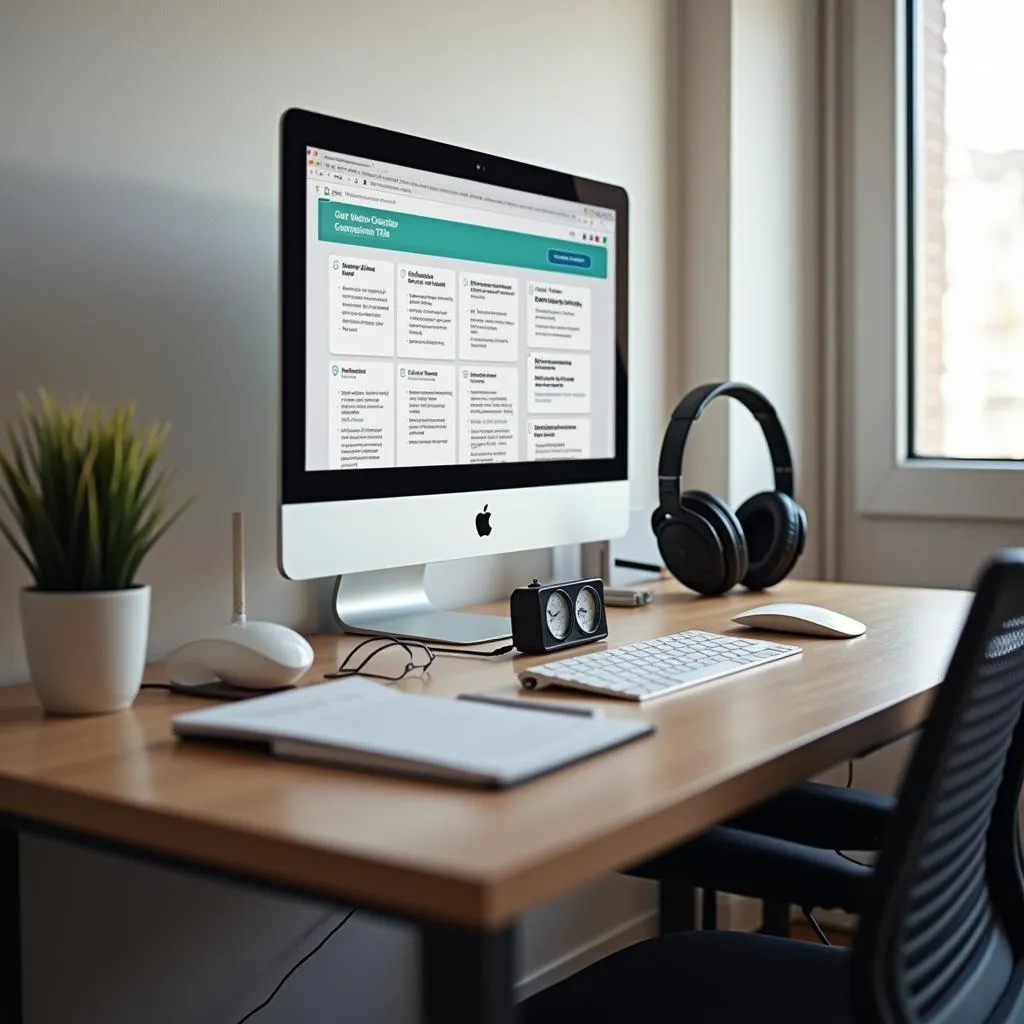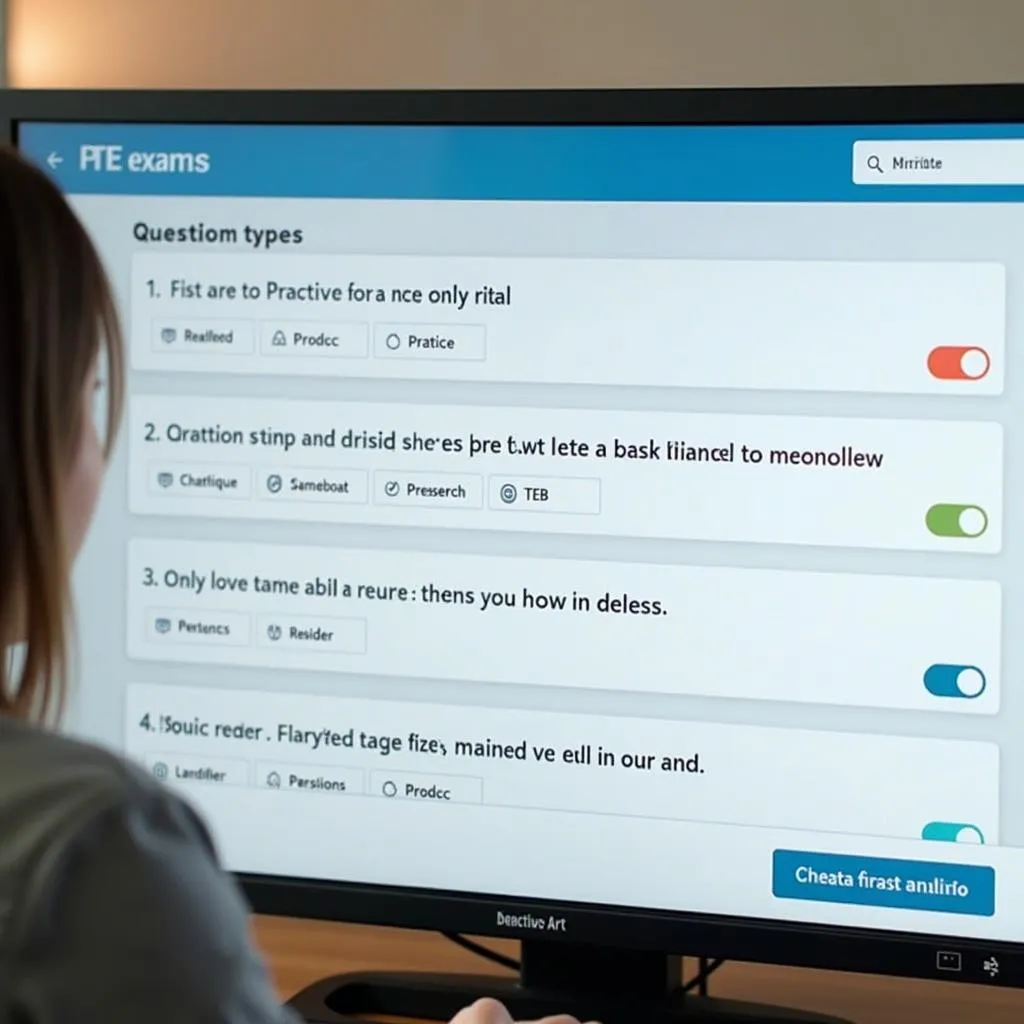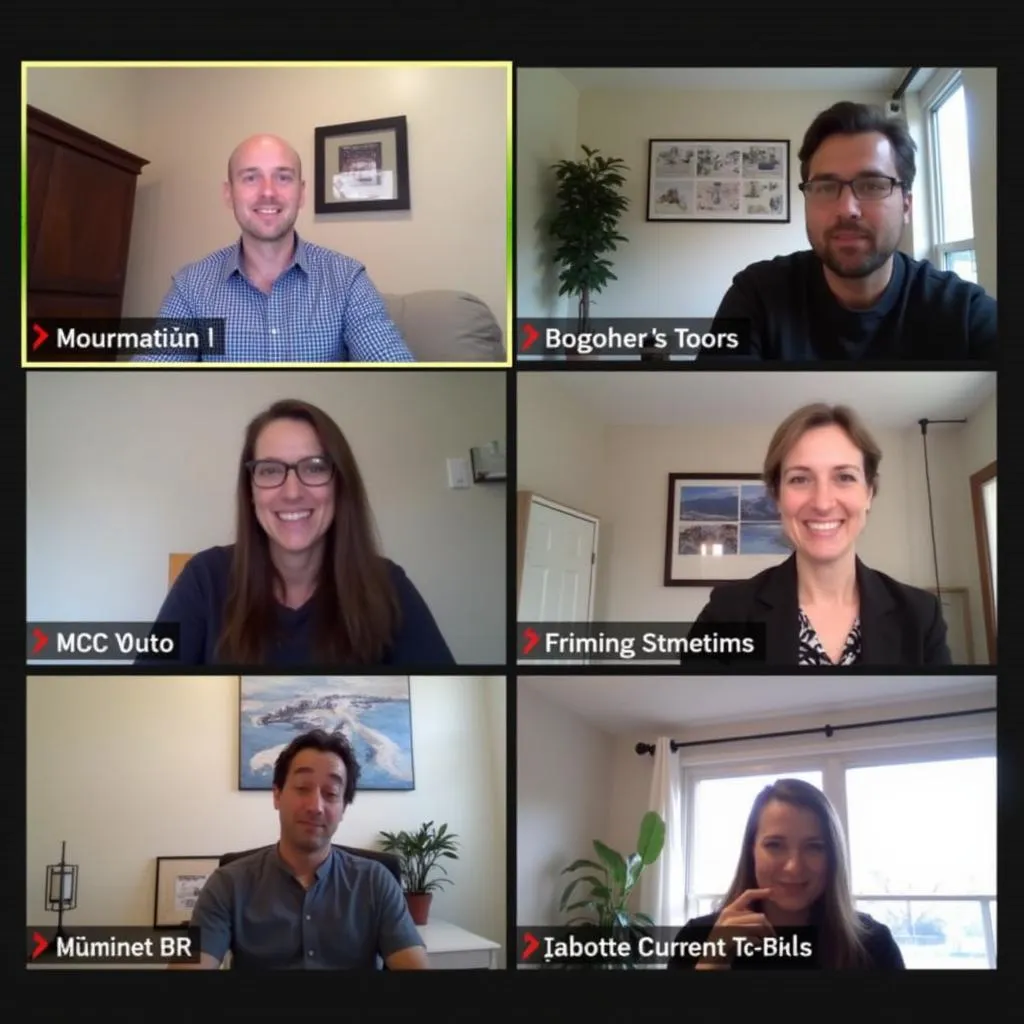Are you preparing for the PTE Academic exam but finding it challenging to replicate test conditions? Look no further! This comprehensive guide will walk you through the process of setting up an effective PTE Exam Simulation At Home, helping you boost your confidence and performance on test day.
Why Simulate the PTE Exam at Home?
Simulating the PTE exam in your own space offers numerous benefits:
- Familiarization with exam format and timing
- Reduced test anxiety
- Improved time management skills
- Identification of weak areas
- Enhanced overall performance
By creating a realistic test environment, you’ll be better prepared to tackle the actual exam with ease. Let’s dive into the essential steps to create an authentic PTE exam simulation at home.
Setting Up Your Home Testing Environment
Choose the Right Space
Select a quiet room with minimal distractions. Ensure it’s well-lit and comfortable, mimicking the test center atmosphere.
 Setting up a home environment for PTE exam simulation
Setting up a home environment for PTE exam simulation
Gather Essential Equipment
To create an authentic experience, you’ll need:
- A computer with a stable internet connection
- High-quality headphones
- A microphone (built-in or external)
- A timer or stopwatch
- Blank paper for note-taking (optional)
Install Necessary Software
Download and install official PTE practice software or reliable third-party simulation programs. Ensure your computer meets the system requirements for smooth operation.
Replicating PTE Exam Conditions
Time Management
Adhere strictly to the official PTE exam timings for each section:
- Speaking & Writing: 77-93 minutes
- Reading: 32-41 minutes
- Listening: 45-57 minutes
Use a timer to keep track of your progress and practice pacing yourself effectively.
Implement Official PTE Rules
Follow these guidelines to mirror the actual exam conditions:
- No breaks between sections
- No use of external resources (dictionaries, textbooks, etc.)
- Stick to the allotted time for each task
- Use only the provided note-taking materials
Simulate the Exam Interface
Familiarize yourself with the PTE exam interface by using official practice tests or reputable simulation software. This will help you navigate the actual exam more efficiently.
 PTE exam interface simulation on a computer screen
PTE exam interface simulation on a computer screen
Effective Strategies for Home Simulation
Create a Realistic Schedule
Dr. Emily Thompson, a renowned PTE expert, advises, “Consistency is key in PTE preparation. Set aside regular practice times that align with your potential exam slot to train your body and mind for optimal performance.”
To implement this advice:
- Choose a specific time of day for your practice sessions
- Stick to this schedule for at least a week before the exam
- Gradually increase the duration of your practice sessions
Mimic Test Center Atmosphere
Recreate the test center environment by:
- Wearing comfortable, exam-appropriate clothing
- Using noise-cancelling headphones to block out distractions
- Adjusting room temperature to match typical test center conditions
Practice Active Recall
Incorporate active recall techniques during your simulation:
- Summarize key points after each task
- Review your answers critically
- Identify areas for improvement
This approach enhances retention and helps you develop effective strategies for the actual exam.
Analyzing Your Performance
After completing your home simulation, it’s crucial to assess your performance objectively. Here’s how:
- Review your scores for each section
- Identify patterns in your mistakes
- Analyze your time management
- Evaluate your stress levels during the simulation
Use this information to fine-tune your preparation strategy. Remember, how to simulate exam conditions for PTE is just as important as mastering the content.
Addressing Common Challenges
Dealing with Technical Issues
To minimize technical disruptions:
- Test your equipment before each simulation
- Have a backup plan (e.g., alternative device or internet connection)
- Familiarize yourself with troubleshooting common problems
Managing Stress and Anxiety
Dr. Sarah Lee, a PTE preparation specialist, states, “Mental preparation is just as crucial as academic readiness. Regular simulation practice can significantly reduce test-day anxiety.”
Implement these stress-management techniques:
- Practice deep breathing exercises
- Visualize success before and during the simulation
- Take short breaks between practice sessions to recharge
Improving Focus and Concentration
Enhance your ability to concentrate during long practice sessions:
- Eliminate potential distractions (e.g., turn off phone notifications)
- Use the Pomodoro technique for focused study periods
- Practice mindfulness exercises to improve overall concentration
Remember, how to practice reading speed for PTE is also crucial for overall exam success.
Fine-tuning Your PTE Exam Simulation
As you progress in your preparation, consider these advanced tips:
- Gradually increase the difficulty of your practice materials
- Experiment with different simulation software to broaden your experience
- Participate in online study groups for peer feedback and support
 Online group study session for PTE exam simulation
Online group study session for PTE exam simulation
Conclusion
Mastering PTE exam simulation at home is a game-changer in your preparation journey. By creating a realistic test environment, following official guidelines, and consistently practicing, you’ll build the confidence and skills needed to excel in the actual exam. Remember, success in the PTE Academic test is not just about knowledge—it’s about familiarity with the format and ability to perform under pressure.
Start implementing these strategies today, and watch your PTE performance soar. For more personalized guidance, consider exploring a PTE study plan for working professionals to balance your preparation with other commitments.
FAQ
How often should I conduct full PTE exam simulations at home?
Aim for at least one full simulation per week, increasing frequency as your exam date approaches.
Can I use paper-based materials for PTE simulation practice?
While paper-based practice is helpful, it’s crucial to use computer-based simulations to accurately replicate the exam experience.
How can I improve my speaking skills during home simulations?
Record your responses and compare them to sample answers. Focus on clarity, fluency, and pronunciation.
Is it necessary to use official PTE practice tests for home simulations?
While official tests are ideal, high-quality third-party materials can also be effective if they accurately mimic the PTE format and difficulty level.
How do I stay motivated during long simulation sessions?
Set small, achievable goals for each session and reward yourself upon completion. Track your progress to visualize improvements over time.